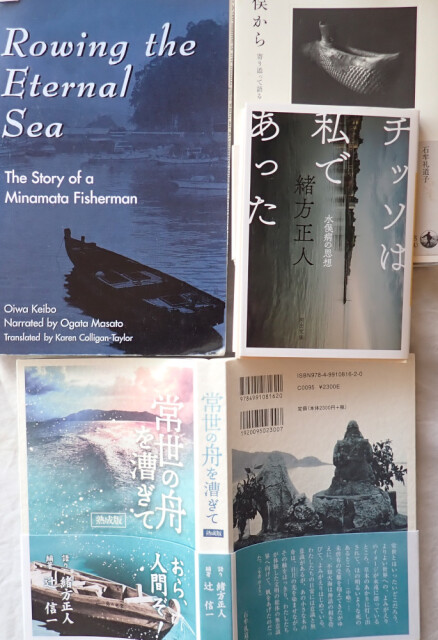Minamata movie's influence: putting attention to worthy people, reprints of worthy books
Просмотр статьи
Просмотр резюме
I'm not sure when (or if) I'll see the new movie MINAMATA. The photo-journalist Eugene Smith is portrayed by Johnny Depp. To make the movie and keep attention focused on the photo-journalist and the pollution tragedy historical precision was sacrificed. But the movie seems to be putting more attention on Aileen Mioko Smith[1] and the surviving congenital victims of Chisso's industrial pollution. So the movie seems to be providing a good influence: People that in Minamata that work with victims of industrial disease seem to think so. [2]
Of course the movie just provides a threshold, or entrance, from which to start exploring everything you can learn about our earth through Minamata's experience. In Japan, another good influence has been the reissue of important books by Masato Ogata.[3]
- [1] Aileen Mioko Smith: 10 Strategiies, 10の手口
- [2] Gonzui Newletter Japanese Quotes
- [3] 6. A Critique of Modernity by a Minamata Fisherman, OGATA Masato
The original meaning of ‘nintei’ (認定 certification), I think, is to ‘mitomeru’ (認める certify) a person’s existence. In the final analysis, the question is whether or not the person’s existence is cherished (存在が愛されているか) in an equal dialogical relationship in which you ask a question and get a response (受け答えの関係). What sufferers want essentially is proof that they are cared for. But such matters as certification of patients and environmental pollution are turned into a question of criteria. If the existence of sufferers is cherished, we wouldn’t have been left alone suffering to begin with… My father died within two months of onset of the illness. When I think about what my deceased father would have wanted to say, I think that it would be ‘I am human!’ (おらぁ人間ぞぉ). He wouldn’t have wanted to be certified as a Minamata disease patient!
...
The biggest problem I had was why everything was decided by money. There has been a massive devaluation of compensation. The first compensation [in 1973] ranged from 16 to 18 million yen per patient, but in 1995, it was 2.6 million, and then, 2.1 million (US$26K). The amount went down. This is the case for the lung disease lawsuit (塵肺訴訟) and lawsuits over drug-induced suffering (薬害訴訟) as well. It was as if life is traded in markets and was devalued in the 40th (1995) and 50th markets [counting from the outbreak of Minamata disease]. With the compensation being slashed like this, the biggest problem is the very fact that the existence of life itself (本来的生命存在) is calculated and converted into a commercial value. The government sees compensation as a ‘cost’. It is the same for TEPCO in relation to the nuclear disaster.
 https://nerdica.net/redir/39050?url=display%2Fa85d7459-1461-4c6f-6888-d88261123821
https://nerdica.net/redir/39050?url=display%2Fa85d7459-1461-4c6f-6888-d88261123821
